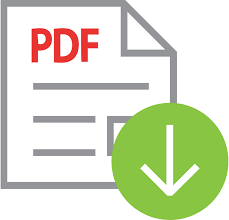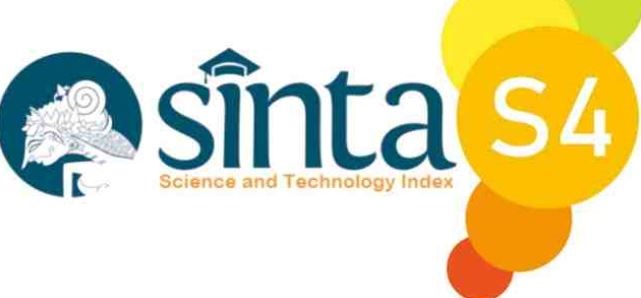SELF-DISCLOSURE DI MEDIA SOSIAL: PERAN KONTROL DIRI DAN AL-HAYA’ PADA REMAJA MUSLIM
 ), Eka Fitriyani(3),
), Eka Fitriyani(3), (1) Fakultas Psikologi UIN Suska Riau
(2) Fakultas Psikologi UIN Suska Riau
(3) Fakultas Psikologi UIN Suska Riau
 Corresponding Author
Corresponding Author
Copyright (c) 2024 Yuli Widiningsih, Hijriyati Cucuani, Eka Fitriyani
DOI : https://doi.org/10.24036/rapun.v15i2.127498
Full Text:
 Language : en
Language : en
Abstract
Keywords
References
Al-Kandari, A., Melkote, S. R., & Sharif, A. (2016). Needs and Motives of Instagram Users that Predict Self-disclosure Use: A Case Study of Young Adults in Kuwait. Journal of Creative Communications, 11(2), 85–101. doi:10.1177/0973258616644808
Al-Muqaddam. 2008. Fikih malu: menghiasi hidup dengan malu. Jakarta: Nakhlah Pustaka
Ausubel. 1955. Relationships between shame and guilt in the socializing process. Psychol Rev. 1955;62(5):378–390. doi:10.1037/h0042534
Ghorbani M, Liao Y, Cayköylü S, Chand M. 2013. Guilt, shame, and reparative behavior: the effect of psychological proximity. Journal of Business Ethics. 2013;114:311–323. doi:10.1007/s10551-012-1350-2
Basalamah, R.N. 2014. Al-Haya Sebagai Solusi Bagi Permasalahan Moral Bangsa. Jurnal Raushan Fikr. Vol. 3. No. 2. 101-113.
Brehm, Sharon S. (2002). Intimate relationship. Edisi ketiga. New York: The. MacGraw-Hill Companies, Inc
Chairani, L., Cucuani, H., & Priyadi, S. (2021). Al-Haya’ Instrument Construction: Shame Measurement Based on the Islamic Concept. Jurnal Psikologi Islam Dan Budaya, 4(1), 1– 14.
Collins, E. F., & Bahar, E. (2000). To Know Shame: Malu and Its Uses in Malay Societies.Journal of Southeast Asian Studies, 14(1), 35–69.
Cucuani, H., Sulastiana, M., Harding, D., Agustiani, H. 2021. The Meaning of Shame for Malay People in Indonesia and Its Relationto Counterproductive Work Behaviors in the Fourth Industrial Revolution (Chapter 4). In Shame 4.0: Investigating an Emotion in Digital Worlds and the Fourth Industrial Revolution. New Delhi: Springer
Cucuani, H., Agustiani, H., Sulastiana, M., Harding, D. 2022. Construction of Shame-Proneness Scale of Employee Malay People: A Study from Indonesia. Psychology Research and Behavior Management 2022:15 927–938. Doi. https://doi.org/10.2147/PRBM.S354439
Dou, J., Liu, C., Xiong, R., Zhou, H., Li, G., & Jia, L. (2022). Empathy and post-traumatic growth among chinese community workers during the covid-19 pandemic: roles of self-disclosure and social support. International Journal of Environmental Research and Public Health, 19(23), 15739. https://doi.org/10.3390/ijerph192315739
Gunarsa, SD (2009). Dari Anak Sampai Usia Lanjut. Jakarta: BPK Gunung Mulia
Hikmawati, Nurawaliah, Hidayat. 2021. Self Disclosure Santri Remaja di Media Sosial: Peran Self Identity Status dan Affiliation Motive. PSYMPATHIC : Jurnal Ilmiah Psikologi. Vol. 8 (1): 153-164.
Kusumasari & Hidayati. 2014. Rasa Malu dan Presentasi Diri Remaja di Media Sosial. Jurnal Psikologi Teori & Terapan. Vol. 4, No. 2, 91 - 105, ISSN: 2087-1708
Wei, M., Russell, D., & Zakalik, R. (2005). Adult attachment, social self-efficacy, self-disclosure, loneliness, and subsequent depression for freshman college students: a longitudinal study.=. Journal of Counseling Psychology, 52(4), 602-614. https://doi.org/10.1037/0022-0167.52.4.602
Wu, Y., Zhang, D., Wang, Y., Wang, S., Wang, Z., Qu, Y., Gu, J. (2022). Pathways from self-disclosure to medical coping strategy among adolescents with moderate and major depression during the covid-19 pandemic: a mediation of self-efficacy. Frontiers in Psychiatry, 13. https://doi.org/10.3389/fpsyt.2022.976386
Yu, S. (2014). Does low self-control explain voluntary disclosure of personal information on the Internet? Computers in Human Behavior, 37, 210–215. https://doi.org/10.1016/j.chb.2014.04.055
 Article Metrics
Article Metrics
 Abstract Views : 109 times
Abstract Views : 109 times
 PDF Downloaded : 18 times
PDF Downloaded : 18 times
Refbacks
- There are currently no refbacks.
Copyright (c) 2024 Yuli Widiningsih, Hijriyati Cucuani, Eka Fitriyani

This work is licensed under a Creative Commons Attribution-NonCommercial 4.0 International License.






